INDIAN ARMED FORCES CHIEFS ON OUR RELENTLESS AND FOCUSED PUBLISHING EFFORTS

The insightful articles, inspiring narrations and analytical perspectives presented by the Editorial Team, establish an alluring connect with the reader. My compliments and best wishes to SP Guide Publications.

"Over the past 60 years, the growth of SP Guide Publications has mirrored the rising stature of Indian Navy. Its well-researched and informative magazines on Defence and Aerospace sector have served to shape an educated opinion of our military personnel, policy makers and the public alike. I wish SP's Publication team continued success, fair winds and following seas in all future endeavour!"

Since, its inception in 1964, SP Guide Publications has consistently demonstrated commitment to high-quality journalism in the aerospace and defence sectors, earning a well-deserved reputation as Asia's largest media house in this domain. I wish SP Guide Publications continued success in its pursuit of excellence.
- A leap in Indian aviation: Prime Minister Modi inaugurates Safran's Global MRO Hub in Hyderabad, Calls It a Milestone
- All about HAMMER Smart Precision Guided Weapon in India — “BEL-Safran Collaboration”
- India, Germany deepen defence ties as High Defence Committee charts ambitious plan
- True strategic autonomy will come only when our code is as indigenous as our hardware: Rajnath Singh
- EXCLUSIVE: Manish Kumar Jha speaks with Air Marshal Ashutosh Dixit, Chief of Integrated Defence Staff (CISC) at Headquarters, Integrated Defence Staff (IDS)
- Experts Speak: G20 Summit: A Sign of Global Fracture
The Thousand Satellite Race
In light of the changing geostrategic environment, a decision has been taken by the Indian government to give an accelerated push to deploy the 52 dedicated defence satellites by 2029, with the first satellite under this phase expected to be launched by April 2026
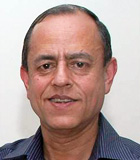 |
The Author is Former Director General of Information Systems and A Special Forces Veteran, Indian Army |
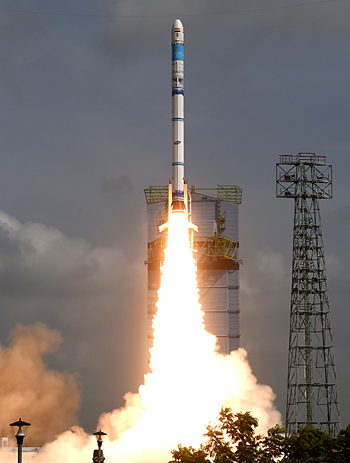
Speaking on the podcast 'From Code to Culture' on June 10, 2025, former ISRO chief S. Somnath said that hypersonic missiles are extremely difficult to intercept, which is why India needs hundreds of satellites. He warned that without a massive satellite boost, Indian Armed Forces risk blind spots in a crisis, an unacceptable vulnerability in an era where wars play out above the clouds. With reference to America aiming for a 500-satellite constellation 'Golden Dome', he said dome is nothing but an early warning system and a neutralising system; looking for incoming missiles origin, its progress and likely impact point; enabling countermeasure before it hits. He highlighted that over 50 per cent of future space-based applications will be defence-oriented.
Relevance of what Somnath has said should be seen in context of a recent study published on July 2, 2025 by researchers affiliated with the People's Liberation Army Rocket Force (PLARF) describing a theoretical framework for launching hypersonic glide vehicles (HGVs) from orbit. These systems, capable of speeds up to Mach 20, could reach targets anywhere on Earth in under 30 minutes, significantly compressing adversaries' early-warning and reaction capabilities. This advancement could drastically alter the speed and unpredictability of strategic strikes, challenging current norms in military deterrence and defence systems. Concurrently, America and Britain are investing in air-breathing hypersonic propulsion systems, aiming to field a new class of hypersonic cruise missiles by 2030.
Speaking on the podcast 'From Code to Culture' on June 10, 2025, former ISRO chief S. Somnath warned that without a massive satellite boost, Indian Armed Forces risk blind spots in a crisis

In April 2025, US Secretary of Defense Pete Hegseth had said that Chinese hypersonic missiles "can take out 10 aircraft carriers in the first 20 minutes of the conflict," emphasising the disruptive nature of such weapons in future military planning. Addressing the Senate Committee on Appropriations recently, General B. Chance Saltzman, chief of space operations of the US Space Force, stated that the PLA People's Liberation Army, China's military, "has fielded satellite-enabled, space-based targeting of terrestrial forces. This kill-web has extended the range and accuracy of PLA weapons to hold US forces at risk." A kill web is an evolution of a kill chain, including systems across domains and technologies. China has been expanding its missile arsenal and capabilities for years, raising concerns in the Pentagon.
India's plan to launch 52 military satellites under the SBS Phase-3 (SBS-3) programme at a cost of ₹26,968 crore has been covered in these columns earlier. These 52 military satellites were planned to be launched in 8 to 10 years. However, in light of the changing geostrategic environment, a decision has been taken to give an aaccelerated push to deploy these 52 dedicated defence satellites by 2029, with the first satellite under this phase expected to be launched by April 2026.
Advancement in launching hypersonic glide vehicles (HGVs) from orbit could drastically alter the speed and unpredictability of strategic strikes, challenging current norms in military deterrence and defence systems.
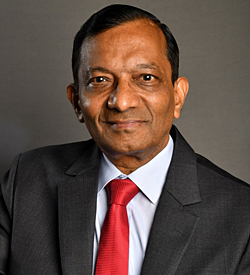
According to news reports of Jun 21, 2025, Hindustan Aeronautics Limited (HAL) standalone bidder for the contract to build the ISRO-designed rocket and was pitted against the two consortia – one led by Alpha Design Technologies, backed by the Adani Group, and the other led by Hyderabad-based Bharat Dynamics Limited. HAL presented the winning bid of ₹511 crore to emerge as the sole manufacturer of the Small Satellite Launch Vehicle (SSLV), ISRO's rocket to place satellites up to 500 kg in low-earth orbit.
Pawan Kumar Goenka, Chairman, Indian National Space Promotion and Authorisation Centre (INSPACe), told a press conference in New Delhi, "Under this technology-transfer agreement, HAL will have the capability to independently build, own and commercialise SSLV launches." Goenka further said, "This is a defining moment. HAL will now build, market, and launch SSLVs independently after a two-year handholding period with ISRO." The two-year transition phase will see HAL manufacture two SSLVs under ISRO's guidance. Its first fully independent rocket launch is expected around August 2027. HAL aims to ramp up to 10 launches annually, carving a strong position in the booming global small satellite sector.
US Secretary of Defence Pete Hegseth had said that Chinese hypersonic missiles "can take out 10 aircraft carriers in the first 20 minutes of the conflict," emphasising the disruptive nature of such weapons in future military planning.
In a post on X, D.K. Sunil, Chairman and Managing Director of HAL, said that HAL will be responsible for absorbing, manufacturing and commercialising SSLV technology. HAL's selection for the SSLV ToT will enable indigenous production and further development of small satellite launch capabilities, opening up new partnerships with domestic and international satellite operators. HAL will be the third company to build rockets after space sector start-ups Skyroot Aerospace and Agnikul Cosmos.
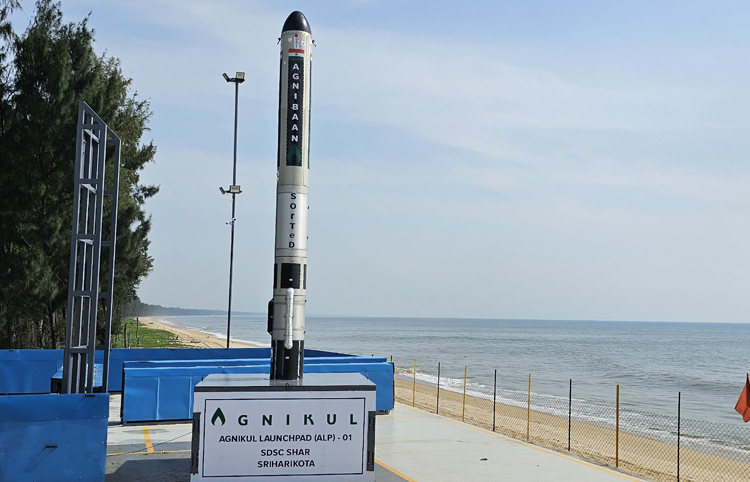
After HAL's SSLV deal, IN-SPACe has transferred ten homegrown ISRO technologies to six Indian companies across the upstream, midstream, and downstream segments according to news reports of July 3, 2025. This initiative is part of a broader effort to deepen private industry participation in India's space ecosystem, while encouraging indigenisation and reducing reliance on imported systems in critical areas such as satellite launches, ground infrastructure, and geospatial applications. Pawan Goenka, Chairman IN-SPACe said. "ISRO has a flourishing repository of R&D in space technologies, and it is time we leverage that to the optimum to strengthen India's space industrial ecosystem. In that effort, industry-led innovation will play a key role."
India plans to launch 52 military satellites under the SBS Phase-3 (SBS-3) programme at a cost of ₹26,968 crore
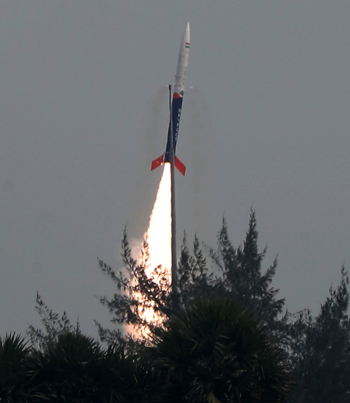
The technologies transferred include: two advanced inertial sensors (Laser Gyroscope and the Ceramic Servo Accelerometer) handed over to Zetatek Technologies Pvt Ltd, Hyderabad; three technologies related to ground station operations (S/X/Ka tri-band dual circular polarised monopulse feed, a tri-axis antenna control servo system, and Ku/C/L and S-Band Cassegrain feed systems) handed over to two Hyderabad-based firms, Avantel and Jisnu Communications; two geospatial models developed by ISRO's Space Applications Centre (SAC) transferred to Amnex Info Technologies, Ahmedabad; compact, multi-parameter, portable bathymetry system transferred to Jalkruti Water Solutions Pvt Ltd, Ahmedabad. Further, a ceramic-based flame-proof coating technology developed by the Vikram Sarabhai Space Centre (VSSC) for use in launch vehicles has been acquired by Ramdev Chemicals in Ahmedabad.
Finally, these developments indicate, India's space sector is on the anvil of accelerated growth, especially since IN-SPACe treats the public and private sectors at the same level.





